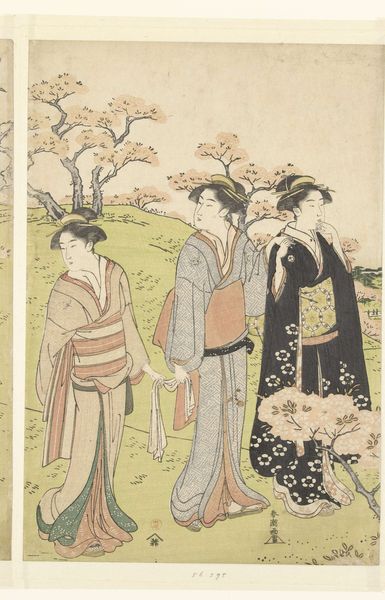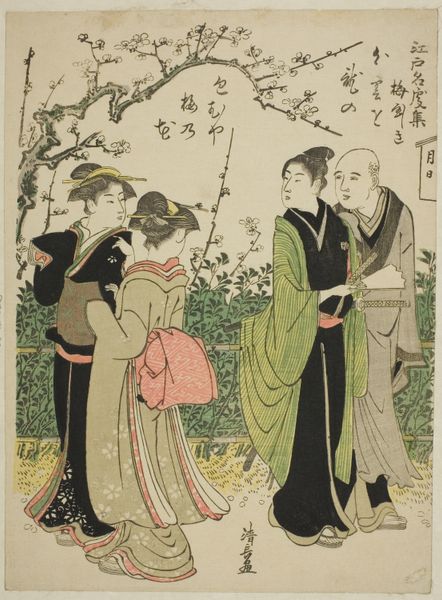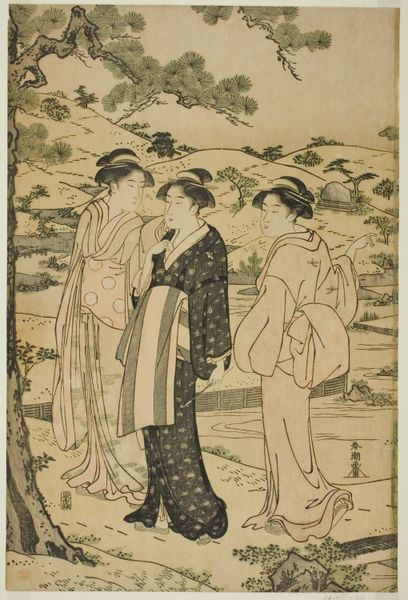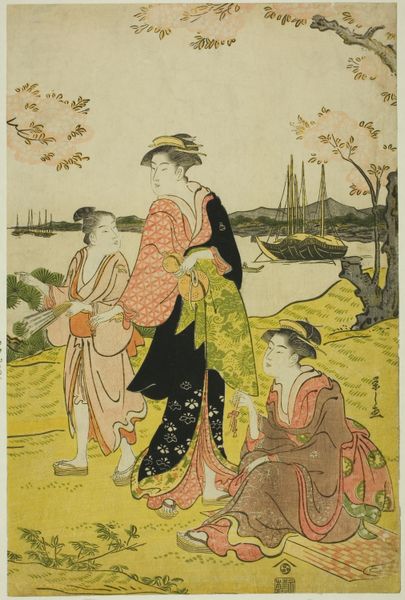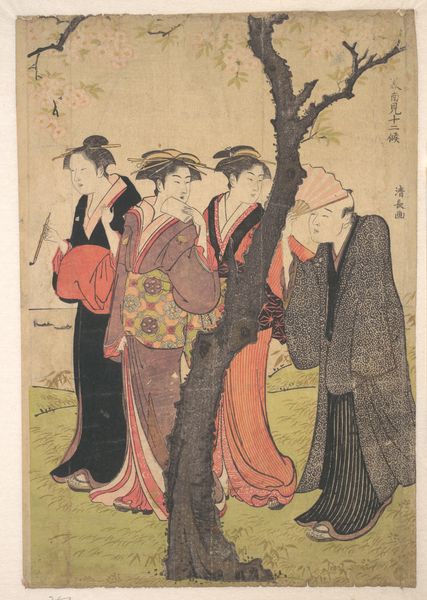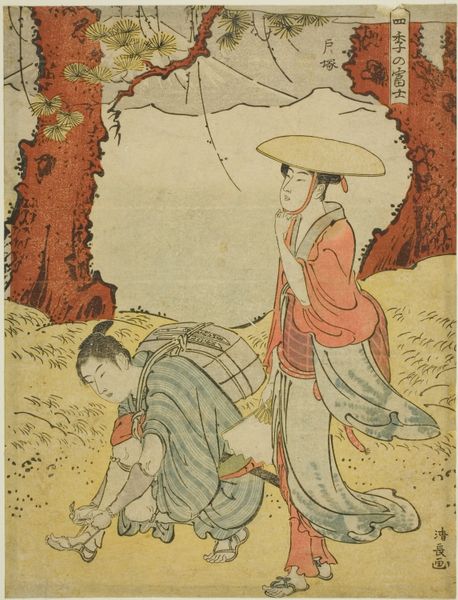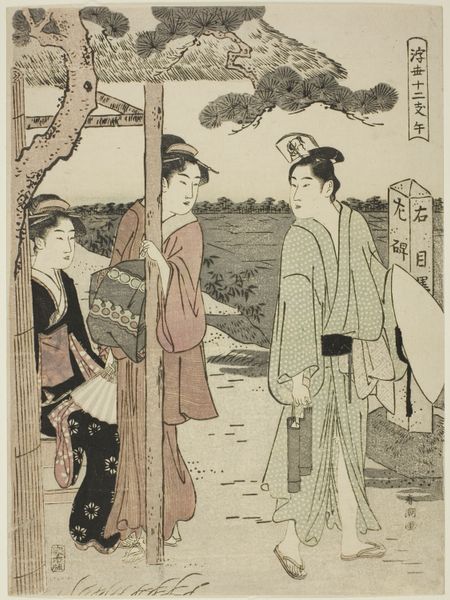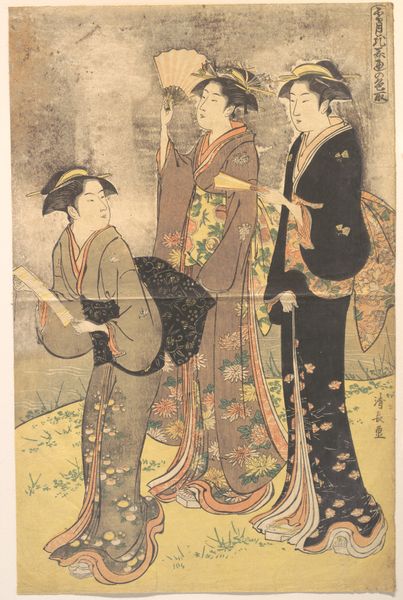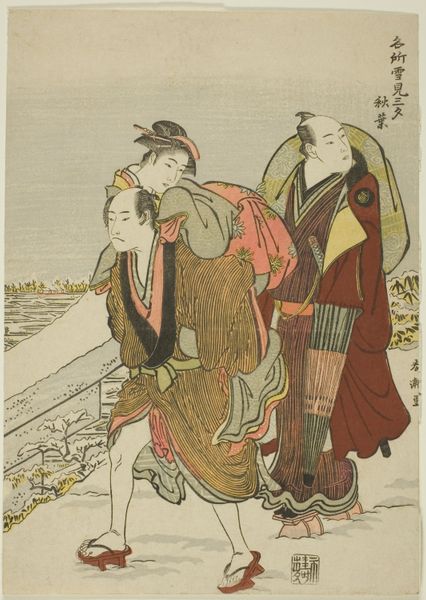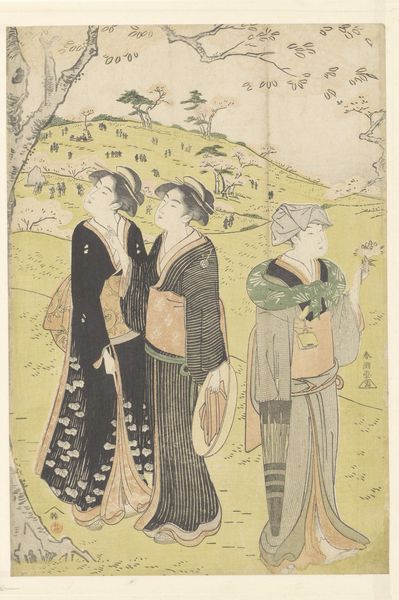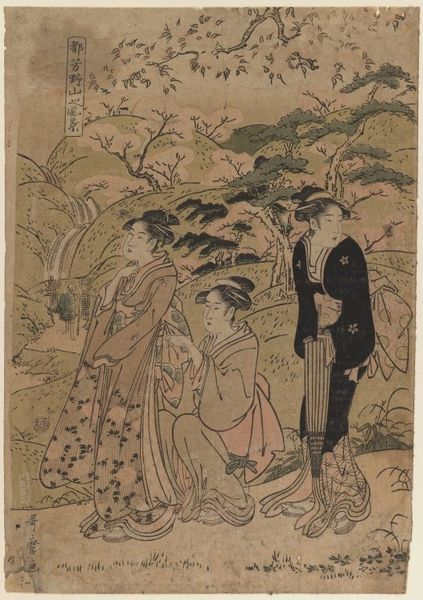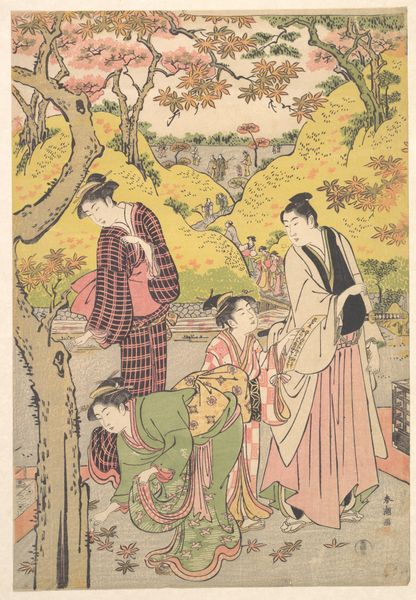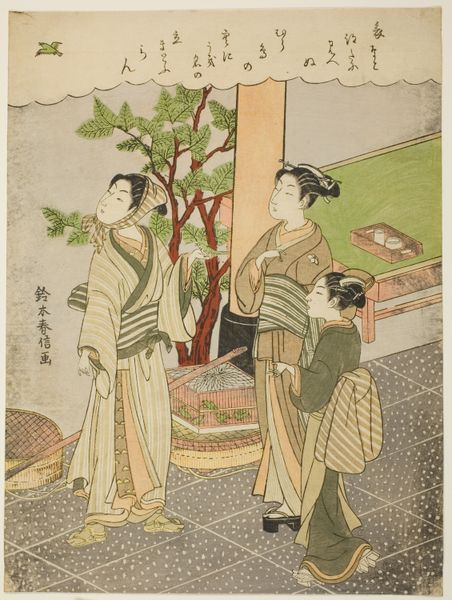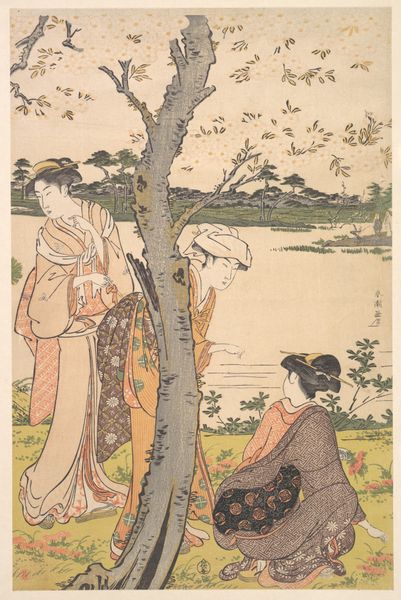
Toei Hill (Toeizan), from the series "Five Hills of Edo (Koto no gozan)" c. 1780 - 1801
0:00
0:00
print, woodblock-print
#
portrait
# print
#
asian-art
#
landscape
#
ukiyo-e
#
figuration
#
woodblock-print
#
genre-painting
#
watercolor
Dimensions: 10 3/8 × 7 7/16 in.
Copyright: Public Domain
Curator: Katsukawa Shunchō’s woodblock print, "Toei Hill (Toeizan), from the series "Five Hills of Edo," likely dating between 1780 and 1801, offers us a glimpse into leisure activities around Edo. What strikes you immediately about this print? Editor: The composition is unexpectedly charming. The arrangement of the figures creates a flowing visual rhythm, complemented by soft colors that evoke a calm and contemplative mood. The blossoming cherry tree acts almost like a natural proscenium arch framing the characters. Curator: Absolutely. Shunchō was working within a specific ukiyo-e tradition catering to the urban merchant class, who were eager to see depictions of fashionable life and leisure spots around the city. Toei Hill, part of the series "Five Hills of Edo," was one of those locales offering picturesque views and social opportunities. This image then, provides visual clues about popular sites around Edo. Editor: I find the detail intriguing too. Notice how the artist used different patterns in each woman’s kimono? These, juxtaposed against the delicate cherry blossoms, generate depth and complexity. The flowing lines accentuate each figures individuality but unite into one cohesive whole. Curator: Those kimono patterns certainly showcase the sophisticated textile industry of Edo. It's interesting to think about how prints like this, circulating widely, would have influenced fashion trends. The act of observing and being seen in these spaces solidified a kind of shared cultural identity. These weren't just pretty pictures, they played an important role in defining social norms. Editor: Indeed! The contrast between the flat picture plane and delicate rendering suggests that Shunchō intentionally wanted viewers to contemplate line, form and shape. It's simple yet elegant! Curator: Well, thinking about the original audience for these prints enriches our interpretation today. Appreciating Shunchō's artistic skills reminds us, these images were always intended to operate within, and comment upon, society itself. Editor: I concur. I leave this encounter impressed by the elegant application of compositional principles as well as the glimpse into Edo’s sophisticated artistic sensibilities during the 18th Century.
Comments
No comments
Be the first to comment and join the conversation on the ultimate creative platform.
